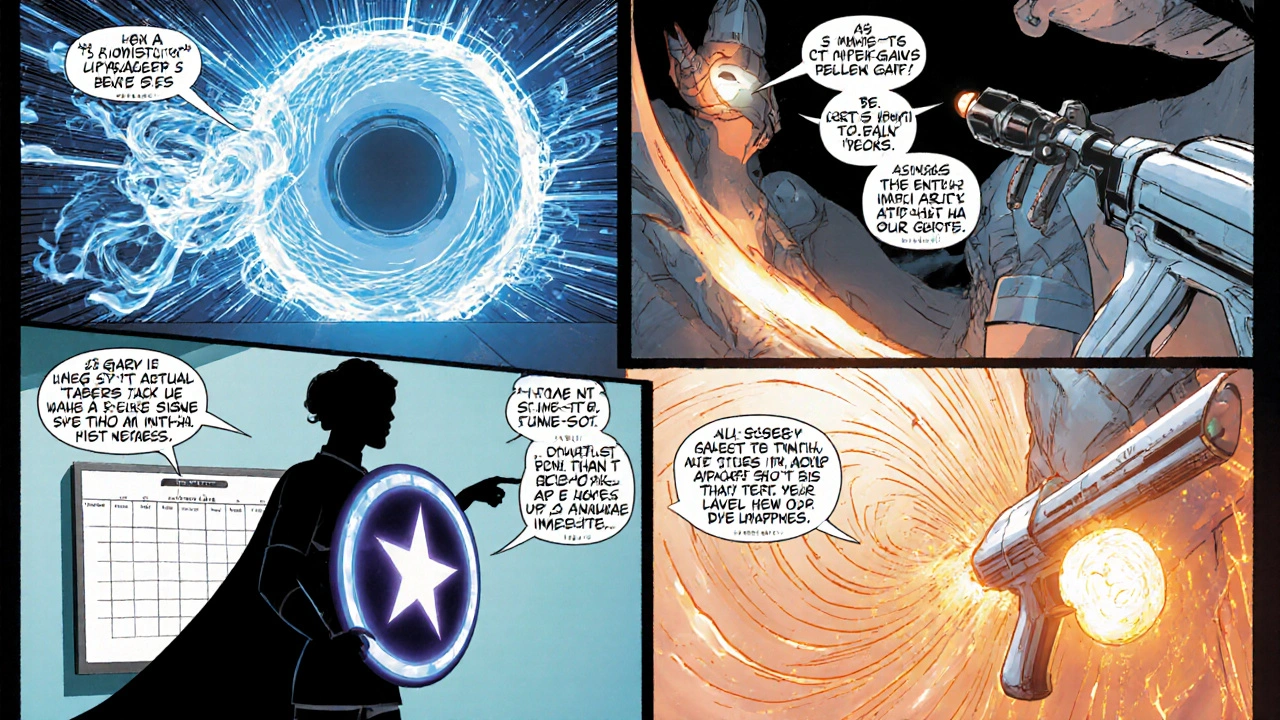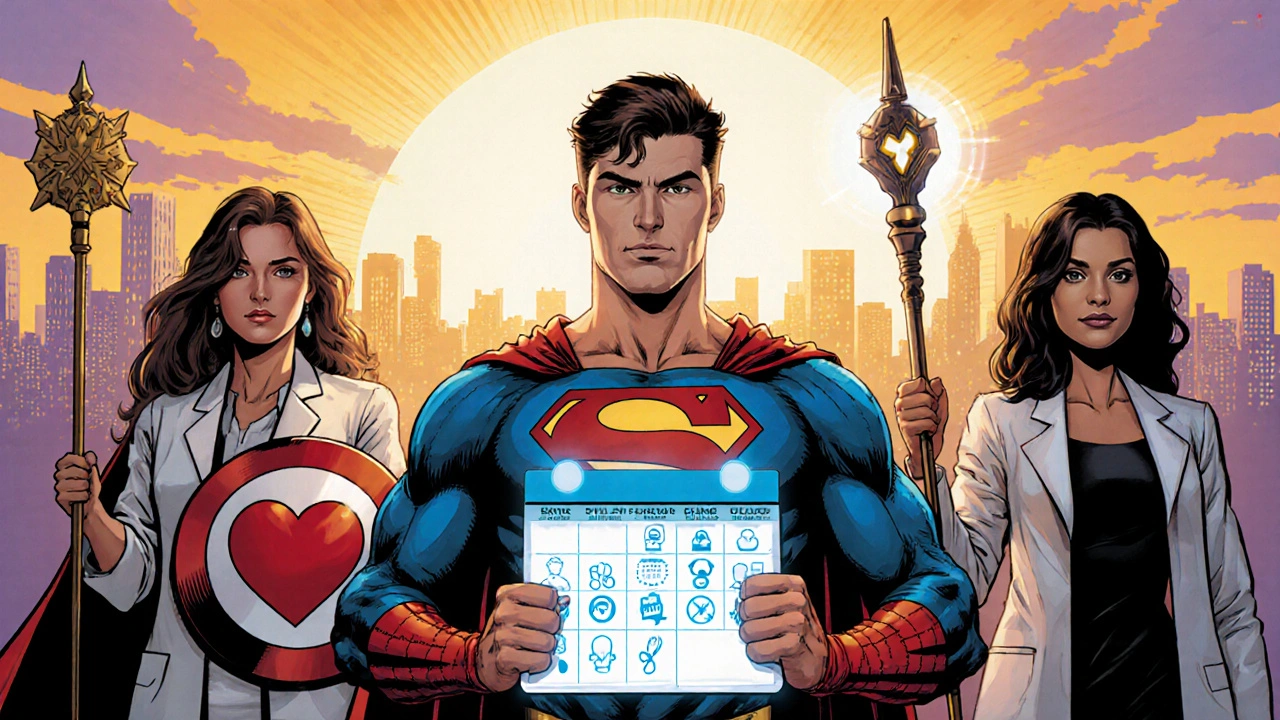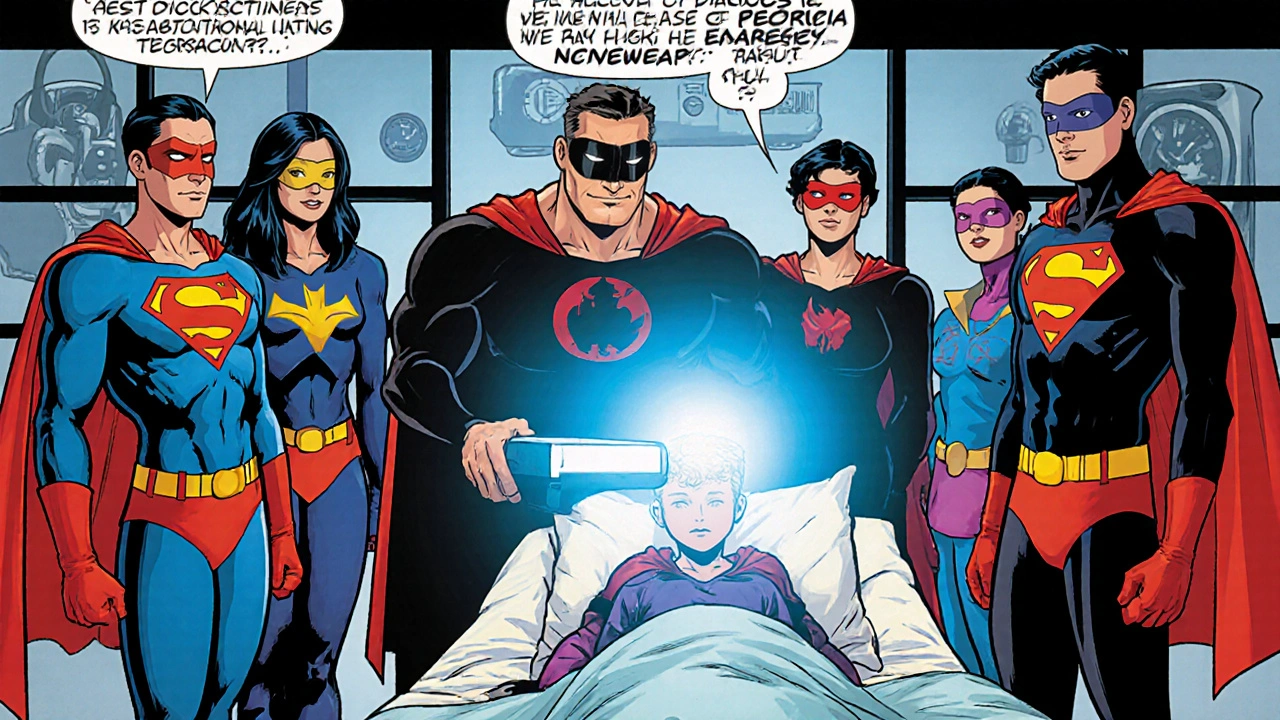Rhabdomyosarcoma Follow-Up Schedule Calculator
Personal Information
How This Tool Works
Based on COG/NCCN guidelines, this calculator estimates your personalized follow-up schedule based on your treatment completion date, cancer subtype, and risk level. Remember: early detection improves survival by 15-20%.
When a child or adult receives a diagnosis of rhabdomyosarcoma is a rare, aggressive soft‑tissue cancer that originates from skeletal muscle progenitor cells, the treatment journey is just the beginning. The real challenge shows up months - sometimes years - after the last round of chemo or radiation, when the disease can sneak back or long‑term side effects emerge. That’s why a solid follow‑up plan is more than a checklist; it’s a lifeline.
Understanding Rhabdomyosarcoma
Soft tissue sarcoma is a broad family of cancers that arise in muscles, fat, nerves, and connective tissue. Rhabdomyosarcoma sits at the most common end of that family in children, accounting for about 3% of all pediatric cancers.
There are two main histologic subtypes: embryonal (more common in younger kids) and alveolar (tends to affect adolescents and carries a higher risk of spread). Knowing the subtype helps doctors decide how aggressive the therapy should be.
Why Follow‑Up Care Matters
Even when the tumor disappears on imaging, microscopic disease can linger. Studies from the International Rhabdomyosarcoma Study Group (IRSG) show that up to 30% of patients experience a relapse within three years, and early detection improves overall survival by 15-20%.
Beyond spotting a recurrence, follow‑up visits monitor:
- Late effects of chemotherapy (e.g., cardiotoxicity from anthracyclines).
- Radiation‑induced changes in bone growth or endocrine function.
- Psychosocial wellbeing and school reintegration.
In short, follow‑up care is the bridge from acute treatment to long‑term survivorship.
Standard Surveillance Schedule
Guidelines from the Children’s Oncology Group (COG) and the National Comprehensive Cancer Network (NCCN) recommend a tiered schedule that balances thoroughness with the burden of appointments.
- First 2 years post‑therapy: Visits every 3 months, with imaging at each visit.
- Years 3-5: Visits every 4-6 months, imaging every 6 months.
- Years 5-10: Annual visits and imaging, unless high‑risk features dictate a tighter cadence.
Each visit typically includes a physical exam, blood work (CBC, liver function, renal panel), and a review of any new symptoms.

Key Tests and What They Reveal
The imaging arsenal is tailored to the primary tumor site and the expected pattern of spread.
| Modality | Strengths | Limitations | Typical Use |
|---|---|---|---|
| MRI | Excellent soft‑tissue contrast, no radiation | Longer scan time, may need sedation for young children | Primary site monitoring, especially head & neck, pelvis |
| CT Scan | Fast, good for lung and bone assessments | Ionizing radiation, less soft‑tissue detail | Chest surveillance for pulmonary metastases |
| Ultrasound | Portable, no radiation, good for abdominal organs | Operator‑dependent, limited depth | Follow‑up of liver or ovarian lesions |
When a suspicious area appears, a biopsy confirms whether it’s a true relapse or a benign post‑radiation change.
Managing Late Effects and Survivorship
Survivorship isn’t just “no cancer”; it’s a proactive health plan. Common late effects include:
- Cardiotoxicity - monitor with echocardiograms every 1-2 years if anthracyclines were used.
- Endocrine dysfunction - thyroid tests and growth assessments are crucial after neck or cranial radiation.
- Secondary malignancies - skin checks and appropriate cancer screenings become part of routine care after 10 years.
A multidisciplinary survivorship clinic, often led by an oncology nurse or survivorship coordinator, helps stitch together cardiology, endocrinology, psychology, and educational support.

Common Pitfalls and How to Avoid Them
Even the best‑designed schedule falls apart if families miss appointments or misunderstand the purpose of each test.
- Assuming “feeling fine” means no recurrence. Relapses can be silent; imaging catches what you can’t feel.
- Skipping blood work. Some organ toxicities show up only in labs before symptoms appear.
- Delaying symptom reporting. New pain, swelling, or unexplained fatigue should trigger a call to the oncology team.
Setting up calendar reminders, using a patient portal for results, and keeping a symptom journal are low‑effort ways to stay on track.
When to Seek Immediate Care
Red‑flag signs that warrant a same‑day visit or emergency department call include:
- Sudden, severe pain at the original tumor site.
- Unexplained fever > 38°C (100.4°F) lasting more than 24 hours.
- New swelling, bruising, or a palpable lump.
- Shortness of breath or persistent cough that could signal lung involvement.
Quick action can mean the difference between a curable localized recurrence and a more advanced disease.
Frequently Asked Questions
How often should imaging be done after finishing treatment?
During the first two years, most guidelines recommend imaging at every follow‑up visit (usually every 3 months). After that, the interval widens to every 6 months until year five, then annually up to ten years, unless the doctor indicates a higher risk.
Can a relapse be cured?
Yes, especially if caught early. Surgical resection plus tailored chemo or radiation can lead to long‑term remission in many cases. Early detection through regular follow‑up improves the odds dramatically.
What are the most common long‑term side effects?
Heart problems, hormone imbalances, growth issues, and secondary cancers are the big three. The exact risk depends on the drugs and radiation fields used.
Should I see a specialist other than my oncologist?
Yes. A cardiologist for heart monitoring, an endocrinologist for hormone checks, and a psychologist for emotional health are often part of the survivorship team.
How can families stay organized with appointments?
Use a shared digital calendar, set reminder alerts, and keep a folder (paper or digital) with all test results and doctor notes. Many cancer centers also offer patient portals that send automatic reminders.


Patricia Echegaray
October 16, 2025 AT 20:31They don’t want you to see the hidden relapse rates that big pharma keeps under wraps, so they push a follow‑up schedule that looks like a bureaucratic nightmare. Every three months they ask for scans, blood work, and endless appointments, all while the real cure‑labs sit in secret vaults. The data shows a 30% relapse, yet the headlines never mention it because the industry profits from endless imaging. Stay vigilant-those hidden labs know more than they let on.
Trust your instincts and demand every test, even if the doctors brush it off as “routine.”
Emily (Emma) Majerus
October 20, 2025 AT 01:19You got this, keep pushin' through the check‑ups!
Virginia Dominguez Gonzales
October 23, 2025 AT 06:07Imagine the relief of a family finally hearing that the scans are clean-it's like the sun breaking through a storm of fear. But the journey doesn’t end there; the silent battles with late effects can feel like an endless marathon. Every blood test is a tiny victory, a reminder that the body is fighting back. Keep the support circle strong, and never underestimate the power of a listening ear during those tough follow‑up visits.
Nickolas Mark Ewald
October 26, 2025 AT 09:55The labs are key; they catch heart issues before they become a problem. Regular check‑ups also give doctors a chance to adjust meds if needed. It’s a simple plan that saves lives.
Chris Beck
October 29, 2025 AT 14:43Look, the schedule is overblown and the system is just a money‑making machine. They want you to sit in waiting rooms for years while they cash in on scans. It’s all about control, not care. If you think they have your best interest at heart, think again.
Sara Werb
November 1, 2025 AT 19:31Oh, you’re right!!! The whole follow‑up circus is a front!!! They hide the truth about the real cure‑labs and push endless MRIs to keep the profit gears grinding!!!! Wake up and see the pattern!!!
Winston Bar
November 5, 2025 AT 00:19Sure, because spending hours in a sterile hallway is exactly what patients need after beating a rare cancer. Let’s all applaud the bureaucracy that turns survivorship into a full‑time job.
Russell Abelido
November 8, 2025 AT 05:07It’s like standing at the edge of a canyon, feeling the wind of uncertainty, yet knowing each appointment is a step toward solid ground. You’re not alone in this journey; every scan is a conversation between you and your body, a dialogue that can reveal hidden stories.
Keep listening, stay hopeful, and remember that resilience is forged in these quiet moments. 😊
Steve Holmes
November 11, 2025 AT 09:55Sticking to the schedule isn’t just paperwork; it’s the safety net that catches the small changes before they become big problems. Every follow‑up is a chance to tweak treatment and keep the long‑term health on track. Let’s keep the community informed and supportive.
Tom Green
November 14, 2025 AT 14:43First, congratulations to every survivor and family who has navigated the tough road of rhabdomyosarcoma treatment. The journey doesn’t end when the last chemo infusion finishes; it transitions into a new phase of vigilant care and hopeful optimism. Regular follow‑up appointments are the cornerstone of this phase, acting as both a safety net and a roadmap for long‑term health. By keeping up with scheduled imaging, blood work, and physical exams, we can spot microscopic disease before it becomes clinically apparent, dramatically improving survival odds.\n\nBeyond catching recurrences early, these visits allow clinicians to monitor the late effects of chemotherapy and radiation, such as cardiotoxicity, endocrine disruptions, and growth abnormalities. Early detection of heart strain through echocardiograms, for instance, can lead to timely interventions that preserve cardiac function for years to come. Similarly, routine thyroid panels and growth assessments catch hormonal imbalances early, enabling hormone replacement or other targeted therapies that keep children thriving in school and daily life.\n\nA multidisciplinary survivorship clinic brings together oncologists, cardiologists, endocrinologists, psychologists, and educational specialists under one roof. This collaborative approach ensures that each aspect of a survivor’s wellbeing is addressed without the family having to juggle endless referrals. It also provides a space for emotional support, where survivors can share their stories, reducing feelings of isolation and fostering a sense of community.\n\nPractical tools can make the follow‑up schedule less overwhelming. Setting up shared digital calendars with automated reminders, using patient portals for result notifications, and keeping a dedicated folder-digital or paper-for all test results simplify the process. A symptom journal, even a simple notebook, helps families track subtle changes that might otherwise be missed, such as intermittent fatigue or mild swelling.\n\nRemember, feeling fine does NOT guarantee the absence of disease. Rhabdomyosarcoma can hide in places that only imaging can reveal. That’s why adherence to the recommended surveillance intervals-every three months for the first two years, then extending to every six months, and eventually annually-is so critical. Each appointment is an opportunity to reinforce the survivor’s health trajectory, catch complications early, and adjust care plans as needed.\n\nFinally, educate the whole family about red‑flag symptoms that require immediate attention: sudden, severe pain at the original tumor site, persistent high fever, new lumps, or unexplained shortness of breath. Prompt action in these scenarios can mean the difference between a curable recurrence and a more advanced disease stage. By staying informed, organized, and proactive, families can turn a daunting follow‑up schedule into a powerful tool that safeguards the future of their loved ones.